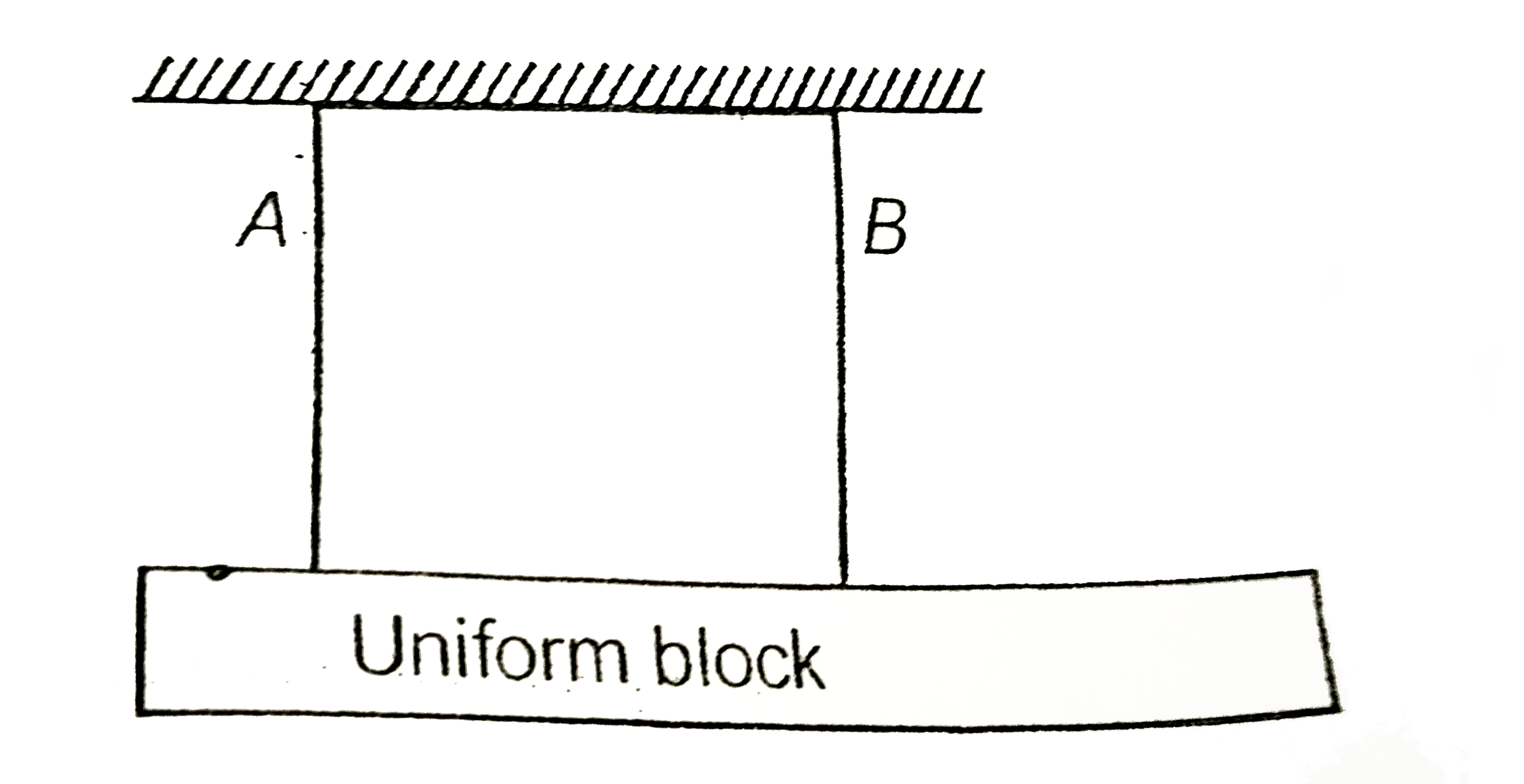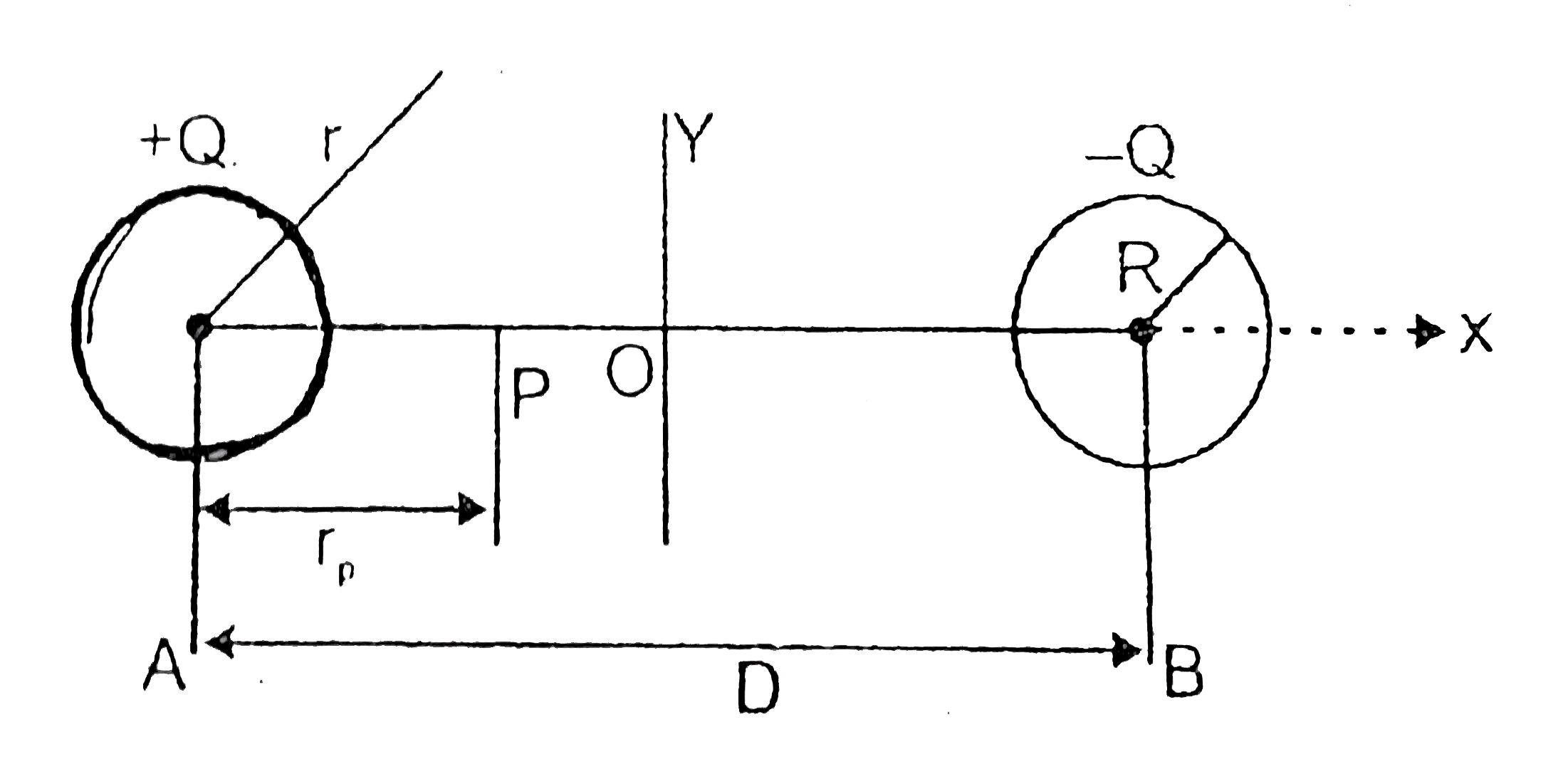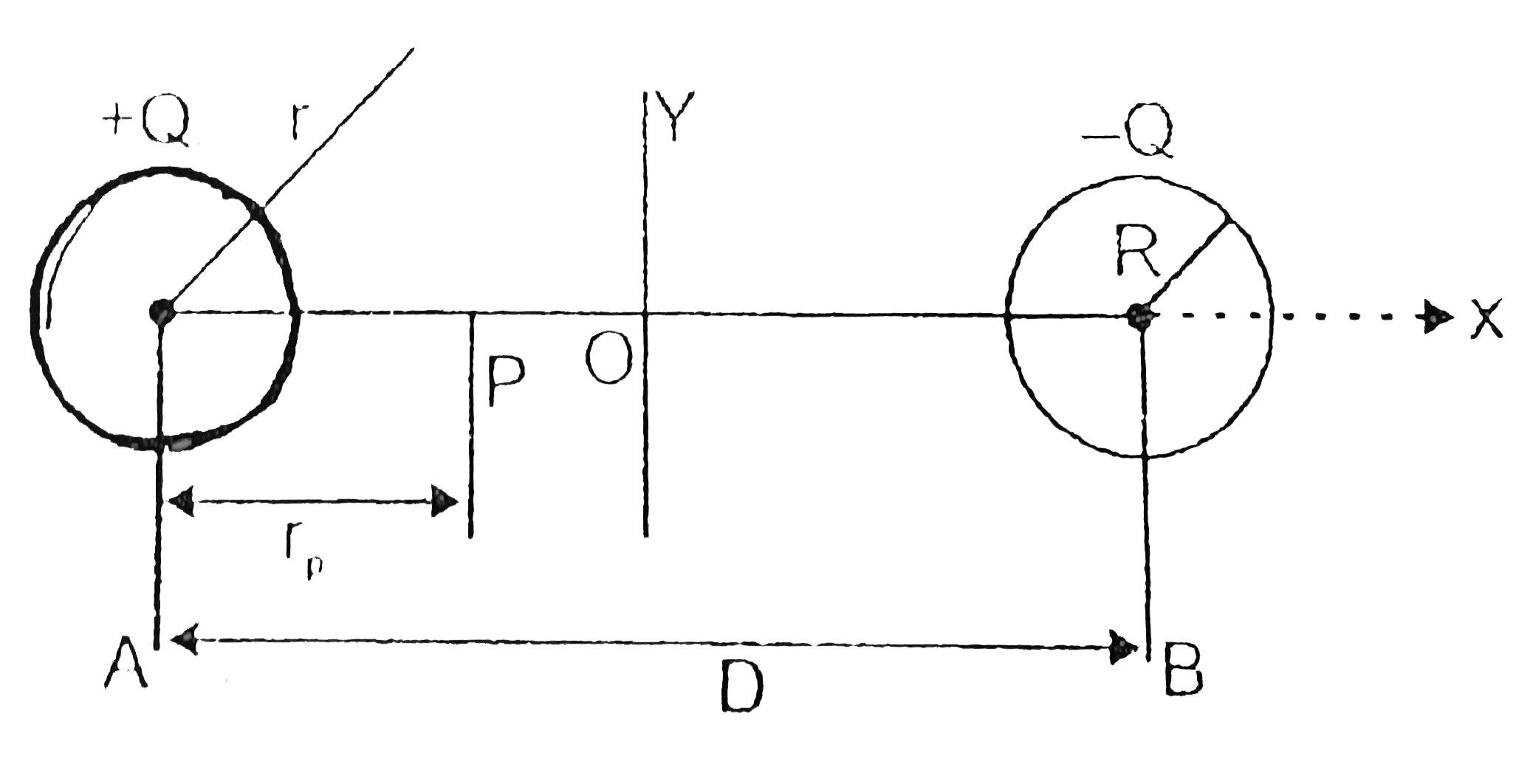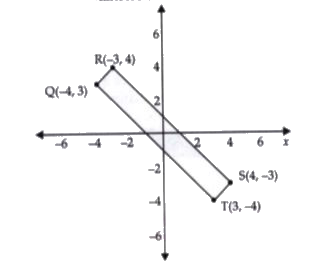The figure shows a horizontal block that is suspended by two wires A and B which are identical except their original length. Which wire was originally shorter?

A
B
Both had equal length
Any one of them could be shorter
The correct Answer is:B
Step by step video & image solution for The figure shows a horizontal block that is suspended by two wires A and B which are identical except their original length. Which wire was originally shorter? by Physics experts to help you in doubts & scoring excellent marks in Class 12 exams.
Updated on:21/07/2023Topper's Solved these Questions
- MECHANICAL PROPERTIES OF SOLIDSBOOK - AAKASH INSTITUTECHAPTER - MECHANICAL PROPERTIES OF SOLIDSEXERCISE - Assignment (SECTION - C)
2 Videos
- MECHANICAL PROPERTIES OF SOLIDSBOOK - AAKASH INSTITUTECHAPTER - MECHANICAL PROPERTIES OF SOLIDSEXERCISE - Assignment (SECTION - D)
2 Videos
- MECHANICAL PROPERTIES OF SOLIDSBOOK - AAKASH INSTITUTECHAPTER - MECHANICAL PROPERTIES OF SOLIDSEXERCISE - Assignment (SECTION - A)
31 Videos
- MECHANICAL PROPERTIES OF FLUIDSBOOK - AAKASH INSTITUTECHAPTER - MECHANICAL PROPERTIES OF FLUIDSEXERCISE - SECTION - J
9 Videos
- Mock test 03BOOK - AAKASH INSTITUTECHAPTER - Mock test 03EXERCISE - EXAMPLE
37 Videos
Similar Questions
Knowledge Check

The figure shows two identical long straight metal wires, A and B placed parallel to z-axis the cross sectional radius of each wire is R and the separation of the two wires is D>>R. The electric potential at a perpendicular distance r>R from a long straight wire due to that wire is given by V=−kln(rR) where k is a positive constant. the wires carry charges +Q and −Q per unit length respectively. Then
Q. Consider a point P on the x-axis. The electric field at P is given by:A→E=(kD−rp−krp)ˆiB→E=k2(1rp+kD−rp)ˆiC→E=(krp+kD−rp)ˆiD→E=(krp−kD−rp)ˆi
The figure shows two identical long straight metal wires, A and B placed parallel to z-axis the cross sectional radius of each wire is R and the separation of the two wires is D>>R. The electric potential at a perpendicular distance r>R from a long straight wire due to that wire is given by V=−kln(rR) where k is a positive constant. the wires carry charges +Q and −Q per unit length respectively. Then
Q. As D>>R, the electric field due to a long straight wire has cylindrical symmetry. The charge per unit length of the wire isAkε0Bπkε0C4πkε0D2πkε0A given wire is stretched to double its length. How will its resistance change ?
ARB2RC3RD4R
Figure shows, three long straight wires parallel and equally speed with identical currents. Then, the force acting on each wire due to the other is

View SolutionA wire has a resistance of 32Ω. It is melted and drawn into a wire of half of its original length. What is the resistance of the new wire?
View SolutionA metal wire of resistance R is cut into three equal pieces that are then connected side by side to form a new wire, the length of which is equal to one third of the original length. The resistance of this new wire is:-
View SolutionA wire of resistance 12Ω is stretched uniformly till its length becomes three times original length. The change in resistance of wire is
View SolutionIn order to quadruple the resistance of a uniform wire, a part of its length was uniformly stretched till the final length of the entire wire was 1.5 times the original length, the part of the wire was fraction equal to

View Solution

